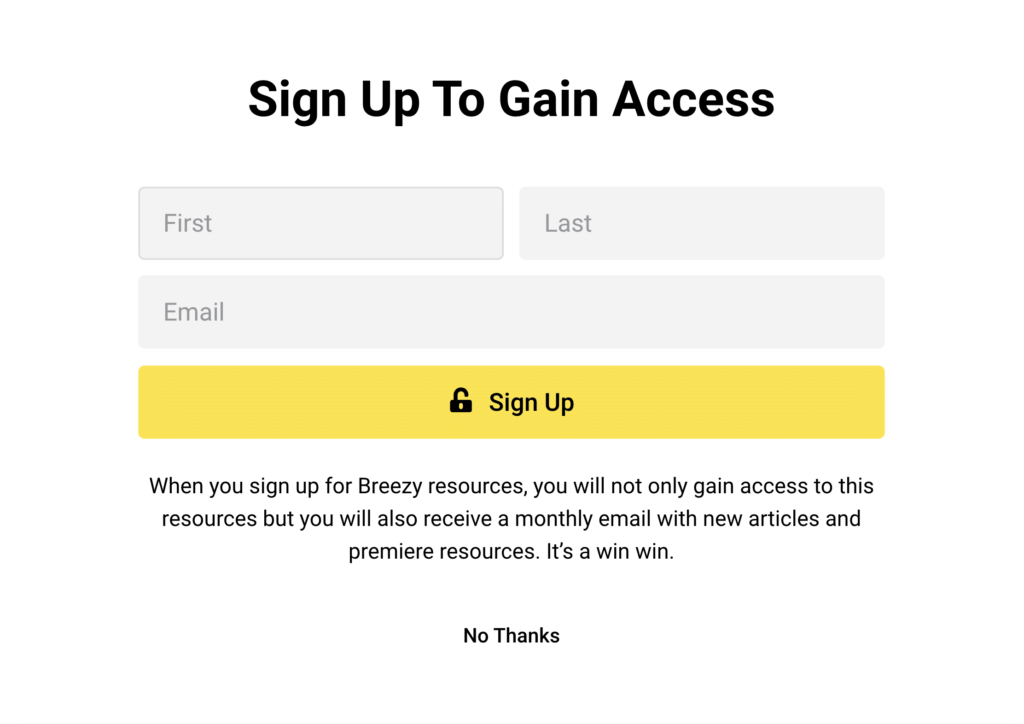
Do you ever wonder how a blog actually convinces somebody to move forward with lead generation? Or how do you get those leads to actually make a decision? What about how all these pieces of content get customers to the end of the marketing funnel? To put it simply: How does content help you get customers?
Let’s take a trip down the marketing funnel and look at the key role that different types of content have in securing leads and conversions.

One of the most typical first steps of the funnel is organic social media content. Typically, when we think about organic marketing, social media marketing comes to mind first, as it is the most passive form of organic marketing. People become aware of a brand or business through social because they’re already on these platforms and in these digital spaces. With this type of organic marketing, customers tend to come across an account or piece of content based on their search history and the algorithm of the platform they are on. Whatever that content is, if it is valuable to the user in some way, it can lead them to go and take in additional social content from that account or source.
For you, the main value of organic social content is to present thought leadership to potential clients, so they can become aware of your credibility, authority, value, products/services, and company. It creates more awareness of your brand to that person so that if they’re interested, you can become a credible source of information for them. Examples of social content include videos, infographics, carousels, stories, animations, written-out posts, etc. The goal is to make them want to go back to your content over and over again so that you can work on building that necessary relationship, trust, credibility, authority, etc. through social proof.
That’s why social content is so essential, not just to create that first awareness for the user, but then, to deliver value to them over and over again. That value comes free to them without any commitment. You’re not asking them to do anything yet, you’re simply adding value to their life by solving their problems through the organic social content you provide.
View this post on InstagramA post shared by Breezy Content | Your Content Marketing Team (@breezy_content)
View this post on InstagramA post shared by Breezy Content | Your Content Marketing Team (@breezy_content)

Next, during that content journey, you’re going to ask them to take action at some point. Now this might be a small action like commenting or liking to create engagement in your space. But eventually, you’re going to ask them to leave the platform and the hope is to drive that traffic to your own space, likely your website. You’ll want them to click on a link, check something out, read a blog–you get the point.
This step is where blogs become really important. They are a place where you can display much longer-form, deep subject matter expertise. The typical social post can’t necessarily grow your authority and credibility as much as a longer-form piece. But the key piece of blogs is that they normally live on your own website. Therefore, leading people to your blogs is ultimately an excellent way to lead them to your website. Once they get there, you’ve captured them with really valuable long-form content that answers their questions, solves their problem, or fixes their issue.
Additionally, in collaboration with effective search engine optimization (SEO) and a well-written blog, value-driven blog, you can drive leads to your website from the blog itself, skipping the organic social content piece. Maybe it’s not as passive as starting on social and then being directed to the blog, but it could be that they were already searching for an answer that your blog provides–which is even better.
Another example of this is long-form YouTube videos as they act in a similar way. Although your videos would be posted on a third-party platform, it’s still a way to display long-form content that gets deep into an area of your expertise. You would just be adding an extra step to get them to your company website. Regardless, they can enter the funnel either way.
The point is: you need to leverage your content marketing strategy to get users on your site to get them to continue down the funnel.

At this point, your target customer should be on your site, whether through a blog, social content, etc. This is where you’re going to ask them to take another step to hopefully further engage them by having a more direct communication line to them, aka, email.
These rich types of content need to be full of information that your lead feels is worth their time and handing over their email address for. These days people are more stingy with their email addresses than they used to be because they get so much spam. So if the content you’re offering isn’t worth it to them, they’re not going to give over a more direct way to contact them. Remember, in this space, value is currency. Be sure you’re providing something worthwhile before asking someone to hand over any sort of “payment” to you.
In most cases, this style of content is going to be the *almost* final step to solving their problem before they contact you. What we mean by that is, for example, let’s say someone needs help with their leadership skills. The downloadable lead magnet will be a useful resource in helping them improve, for sure, but won’t be as good as working with the leadership coach directly. This should be emphasized in your call to action in a humble and persuasive way.
Be very clear with yourself and your team working on this piece what the actual goal of it is.
This choice depends on your current revenue, sales, and client acquisition goals and should be in complete alignment with those goals.


After all that, you’re now building up your email list, arguably the most important part of the funnel and typically the most effective.
Social content is passive in nature, as users are already scrolling and spending time in that particular digital space. While social certainly can lead to conversions through a purchase on that platform or direct communication, email tends to be the most effective method across industries.
Think about it: A user gave you permission to enter what can be considered a personal communication space. The content you share with them through email has to be even more valuable than a blog. It has to be deep, interesting, full of good information, and makes taking a step towards conversion easy.
Email marketing (and text marketing) are the most direct forms of marketing that we have, it is literally in somebody’s inbox. Email content should be full of value and extremely direct at the same time.
The goal is for your subscribers to look forward to getting your emails and not be annoyed by them. Do this by assuring they are sent with the right frequency to where they will actually open them. Then, once again, direct them back to your content, whether it’s on offer, a call, or a long-form piece of content on your site. This process is a funnel certainly, but it’s also a cycle because all the steps truly revolve around one another.

Many business owners and marketers have thought of the funnel as a way to get customers to the bottom point where they make a purchasing decision. But the landscape has changed dramatically. Now, you need to not only get them to say yes to your product or service but to get them to keep engaging with your brand on social. You want them to keep reading your blog, watching your YouTube channel, and engaging with your content. Use the funnel to gain clients but to create a cycle that builds lasting relationships with loyal customers.
If you want to begin implementing this funnel into your marketing strategy but don’t know where to start, we are here to help. We will create everything from your social content to your lead generation to your email marketing materials. Content marketing doesn’t have to be stressful–see how by reaching out today.
We know that carving out the time, resources, and energy to create ongoing content for your brand or business is a full-time job. That’s why we created Breezy – your instant content marketing team.
You don’t need to hire multiple full-time employees to handle all of the strategy, planning, writing, designing, and publishing of content. You also don’t have time to wrangle tons of different freelancers to get this all completed. You need one expert team that can help get all of the amazing thought-leadership and subject matter expertise out of your head and into formalized, engaging content that keeps you top of mind with your audience.
We’re that team!
See how we can help your small business, startup, or agency with a free consultation.
Savannah Abney is the Co-Founder and CEO of The Breezy Company. With over 6 years of experience, she specializes in content strategy, video marketing, and brand storytelling-helping small businesses grow through a strong digital reputation.
Read more articles by Savannah Abney